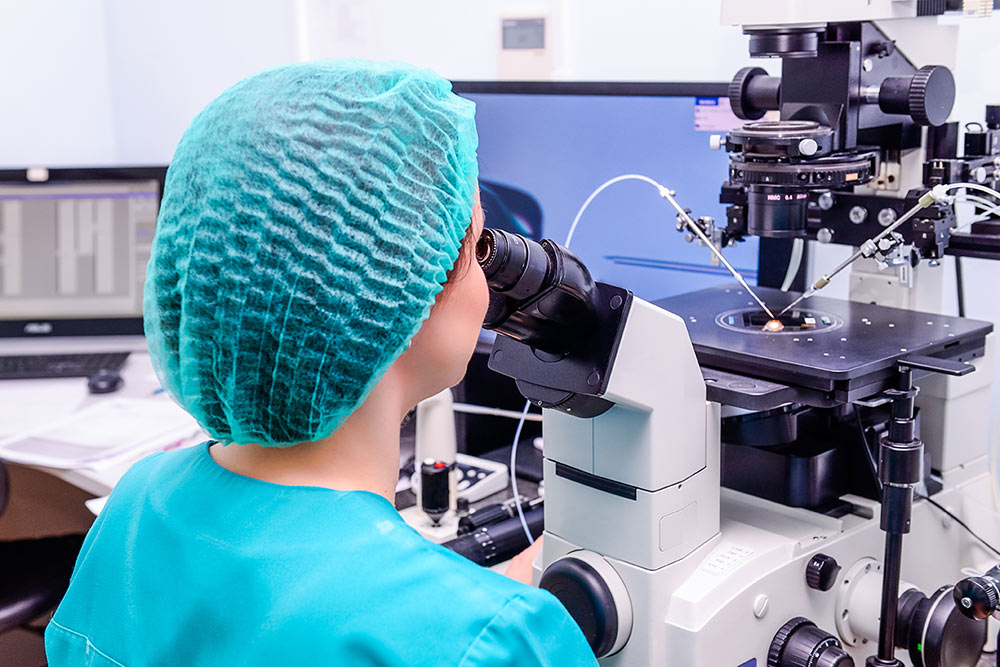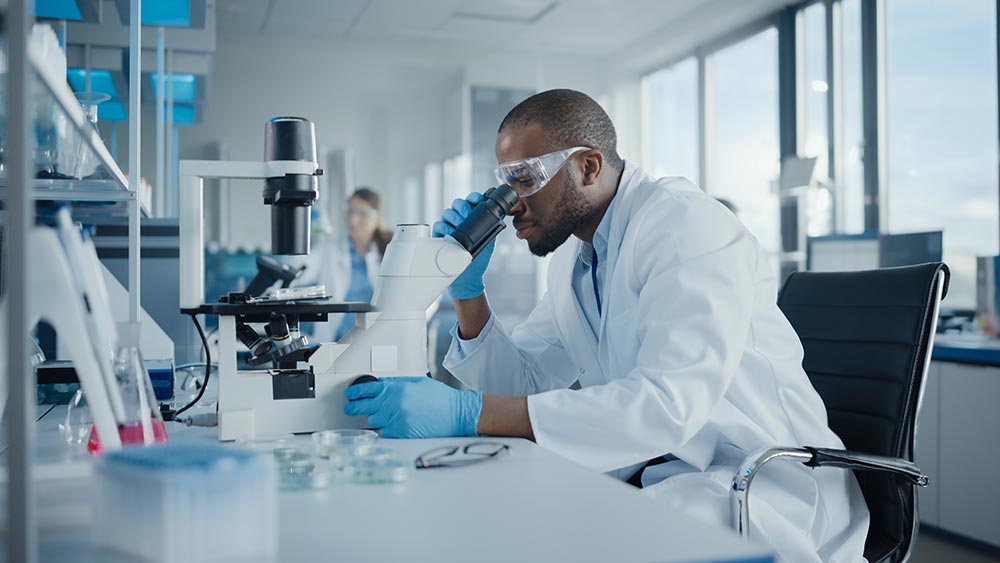Founded in partnership with Genetics & IVF Institute in 1984, Fairfax Diagnostic’s PGT Lab has been responsible for numerous key innovations in reproductive molecular genetics, helping couples have healthy babies and healthy lives.


Fairfax Diagnostics partners with Genetics & IVF Institute (GIVF) and its family of organizations: Fairfax Cryobank, Fairfax EggBank, and Fairfax Surrogacy. We began performing Preimplantation Genetic Testing (PGT) in 1993 and have performed more than 6,000 PGT cycles, helping families across the country and around the world have healthy babies.
We use Illumina’s VeriSeq protocol and BlueFuse Multi data analysis software, the most advanced Next Generation Sequencing (NGS) technology available to perform PGT. Our team has designed hundreds of custom assays for the common genetic disorders and we have specialized in strategies for highly complex genetic lesions, compound heterozygotes, and multi-gene PGT cases.
All results are reviewed by a team of molecular and clinical PhD/MD experts. Our medical and laboratory directors each have over 25 years of experience at Fairfax Diagnostics and our lab maintains a zero-misdiagnosis rate in all PGT programs.
Fairfax Diagnostics can design PGT-M test for almost all genetic disorders that have been characterized by a genetic report. Some of our most recent PGT-M cases include: Huntington’s disease, spinal muscular atrophy (SMA), cystic fibrosis, Duschenne’s muscular disease, and many more.
PGT for monogenic (single-gene) disorders (PGT-M) is used with an IVF cycle for at-risk couples to determine that an embryo does not contain an inherited genetic disorder; thus, ensuring the disorder is not passed on to children.
PGT for aneuploidies (PGT-A) determines if an embryo has the correct number of chromosomes prior to uterine implantation. For couples undergoing IVF, it can significantly increase the chance of a pregnancy and birth of a healthy child.
PGT for structural rearrangements (PGT-SR) is used with an IVF cycle for couples that carry structural chromosome rearrangements called translocations. It can identify embryos for transfer that contain balanced chromosome content.
To get started with PGT at Fairfax Diagnostics contact us today.

Looking for more information on PGT at Fairfax Diagnostics? Here are some frequently asked questions.
To appreciate how PGT can be helpful to couples it is important to understand chromosomes. Chromosomes are the physical structures made of DNA that contain the genes necessary for development. Chromosomes are located in the center of the cell, in the area called the nucleus. A normal human cell should contain exactly 46 chromosomes. There are 23 pairs of chromosomes. The first 22 pairs are identified by number and organized by size. The 23rd pair, the sex chromosomes, determines gender. Females have two of the same sex chromosome, called the X chromosome, while men have two different sex chromosomes, known as the X and Y chromosomes. A normal set of chromosomes is 46, XX for a female and 46, XY for a male. In a normal conception, both the egg and sperm cells should contribute exactly 23 individual chromosomes, one of each of the 22 numbered pairs (called autosomes) and one of the sex chromosome pair. When an egg with 23 chromosomes fuses with a sperm with 23 chromosomes, the correct chromosome number of 46 (23 pairs) is again present, and the fertilized embryo has the best possible chance of developing appropriately. When an egg or sperm cell divides improperly as it is developing, the mature egg or sperm may contain more or less than 23 chromosomes. If this egg or sperm is used for fertilization, the resulting embryo will not contain exactly 46 chromosomes, but more or less than 46, known as aneuploidy.
Preimplantation genetic testing (PGT) is performed by removing a few cells from the trophectoderm layer of a developing embryo at the blastocyst stage (day 5 or 6) during an in vitro fertilization cycle.
Yes. Substantial data indicates that PGT does not increase birth defects over that of the general population. Removal of a few cells from the outer layer (trophectoderm) does not alter the ability of that embryo to develop a normal pregnancy; in fact, biopsy avoids disrupting the embryo’s inner most cells that will form the fetus. In embryos undergoing PGT testing, many fewer pregnancies will end in miscarriages due to chromosomal disorders since abnormalities are identified prior to embryo transfer.
Embryos created using standard IVF protocols with intracytoplasmic sperm injection (ICSI) are grown in the laboratory for 5 to 6 days until they form an early embryo called a blastocyst. The embryo is subsequently biopsied to remove a few cells from the outer layer, also called a trophectoderm, which is destined to form the placenta.
After biopsy, embryos are frozen and stored while the cell’s genetic material is tested for abnormalities using PGT. After PGT analysis, results are evaluated by the medical and genetics teams, then a Fairfax Diagnostics genetic counselor will discuss results with the patient/couple and a frozen embryo transfer (FET) cycle is planned for the healthy embryo(s).
To get started with PGT at Fairfax Diagnostics contact us today.
